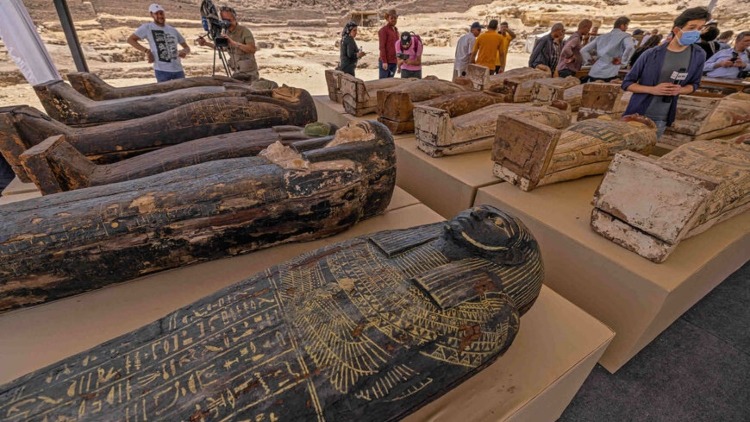With 4000 years under its belt, ancient Egypt is the ultimate treasure trove of untapped discoveries, miracles and mysteries. In the year 2022 alone, archaeologists scattered across the country’s terrain, unmasked countless findings, some of which managed to alter and re-write pieces ancient Egyptian history. Let’s take a look at the most recent prominent discoveries!
A Temple Dedicated To Zeus-Kasios
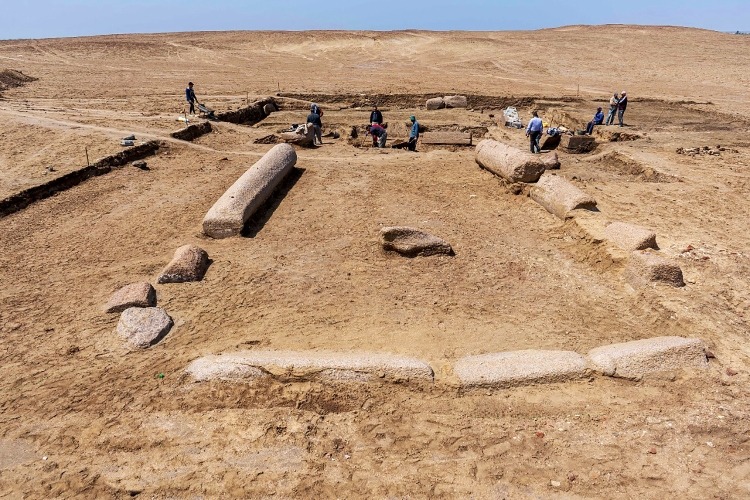
Who doesn’t love a touch of Greek mythology every now and then? Its stories and legends packed with epic tales as well as gods and goddesses imbued with extraordinary abilities remain an intrinsic source of entertainment for the masses. Bringing that very world to the endless desert terrains of Egypt was a unique discovery made back in April 2022. While performing an excavation at the Tell el-Farama site, North-West of Sinai, a group of archaeologists unearthed the remains of an entire temple dedicated to Zeus-Kasios, a deity who was a hybrid between the father of all gods Zeus and the weather god Kasios. The discovery was made when researchers found two toppled pink granite columns jutting out from the ground and made the link that they probably collapsed from the temple’s front gate.
Ptah-Em-Wia Coffin

Along the history of ancient Egypt are prominent figures whose names remain immortal, among these legends is the infamous Egyptian pharaoh King Ramses II, the third ruler of ancient Egypt’s 19th Dynasty. Back in October 2022, roughly 20 km south of Cairo at Saqqara, archaeologists stumbled upon a major finding directly linked to the distinguished ruler. While excavating an ancient burial chamber, they were able to find a massive granite sarcophagus belonging to King Ramses II’s treasurer, Ptah-Em-Wia. All along the surface of the coffin were special inscriptions that helped researchers confirm the treasurer’s identity as well as his close relationship with Ramses II. The entire discovery was exceptional as finding a complete sarcophagus in its original tomb is an extremely rare find.
A Possible Lead On Cleopatra’s Long-Lost Tomb
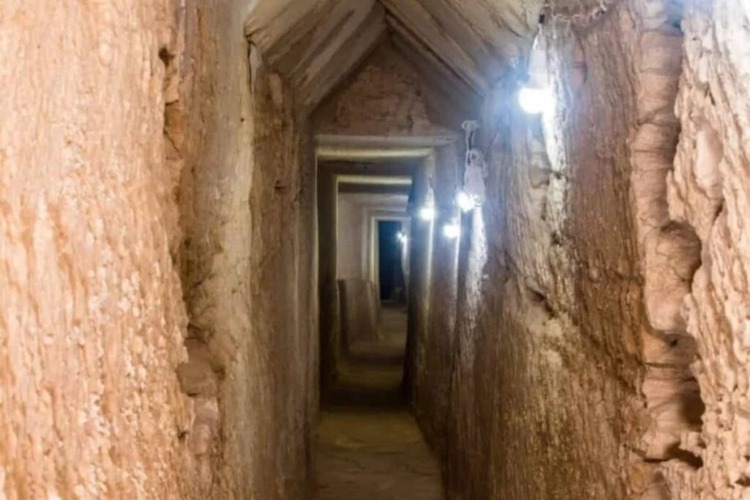
A timeless name imprinted and attached to our ancient civilization is that of the legendary Cleopatra. Her name needs no introduction nor her influence as one of the female ancient leaders who actively played a role in Roman politics and that is why discovering her tomb would be the ultimate ‘holy grail’ for any archaeologist. Last year, one team in particular may have gotten a step closer to uncovering that very tomb. In November, during an extensive search for the ruler’s burial site, a team of archaeologists from the University of Santo Domingo located a mysterious 4,281-foot-long tunnel more than 12 meters underground at the ruined city of Taposiris Magna, just outside of Alexandria. It was dubbed an ‘engineering miracle’ for it being still in existence after being buried in mud and seawater for hundreds of years. What makes it even more special is that it could lead to the burial chambers of Cleopatra VII and Anthony.
Protective Childbirth Tattoos
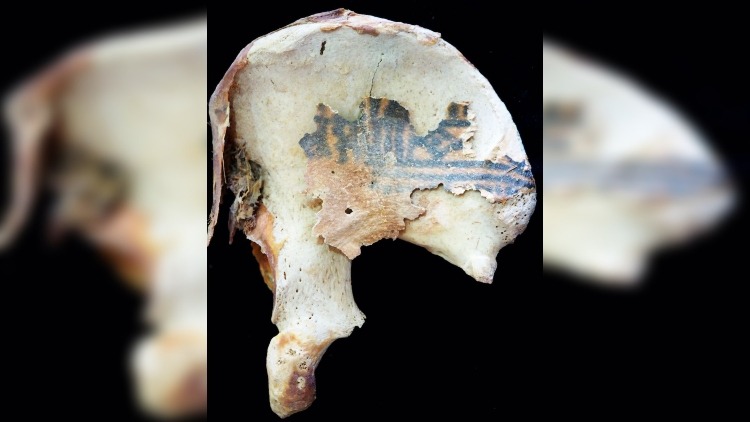
Tapping into the daily life and culture of a world that existed 4000 years ago is a pretty cool notion to say the least. One discovery that was made back in mid November showcased an aspect of what life was like way back when… During ancient times, before giving birth, many mothers would get a tattoo as a form of protection during childbirth. While studying mummies buried at Deir el-Medina, an archaeological site found along the banks of the Nile River, six examples of that ancient practice. It is extremely rare to be able to find ancient tattoos especially since the skin needs to be preserved and so archaeologists would make it a practice not to unwrap the mummies. But, in this special case, many parts of the mummies bodies were already exposing revealing ancient ink on the bodies of the mummified remains. One body had a tattoo on its lower back of Bes, the ancient deity that protected women during childbirth.
Discovery of a Tomb of a Previously Unknown Queen
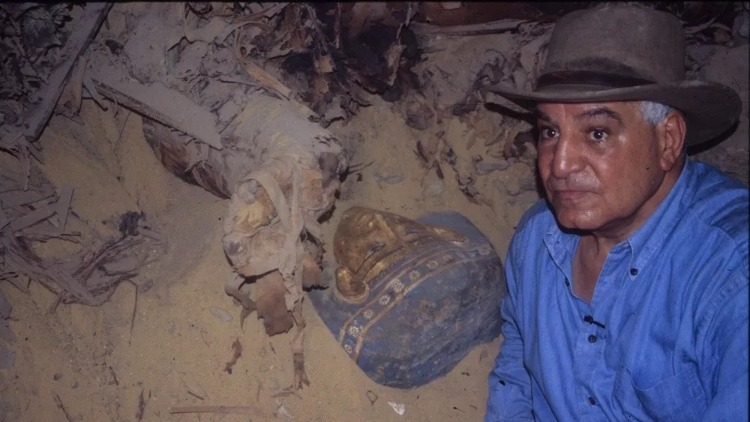
Ancient Egypt was known to be home to a wide range of prominent rulers including Hatshepsut, Amenhotep III and King Tutankhamun. That is why uncovering an entirely new ancient Egyptian royal figure makes for a thrilling discovery and story. Back in November, while excavating at Saqqara, a team of archaeologists uncovered the pyramid of the mysterious Queen Neith and a cache of 300 coffins and more than 100 mummies, some of which belonged to King Tut’s closest generals and advisors.
First Full-Colour Complete Mummy Portraits

For eons historic portraits have not only acted as a form of artistic expression but also as a way to show what an individual would have looked like. Eventhough ancient Egyptian art did not make much use of portraits, later in the first Century CE this type of art was introduced and remained for 200 years. At that time, these portraits were used to identify mummies, therefore were dubbed… mummy portraits. They were placed outside of the coffin over the head of the individual and now, years later, for the first time in over a century, archaeologists were able to find two complete color portraits of mummies at the Gerza excavation site in Egypt’s Fayoum.
With so many discoveries uncovered to this day especially ones that have re-written some of the known history of ancient Egypt, more is yet to be found and uncovered. No matter how big a gap researchers and archaeologists attempt to fill with each find, it can be said that we have still barely scratched the surface.


